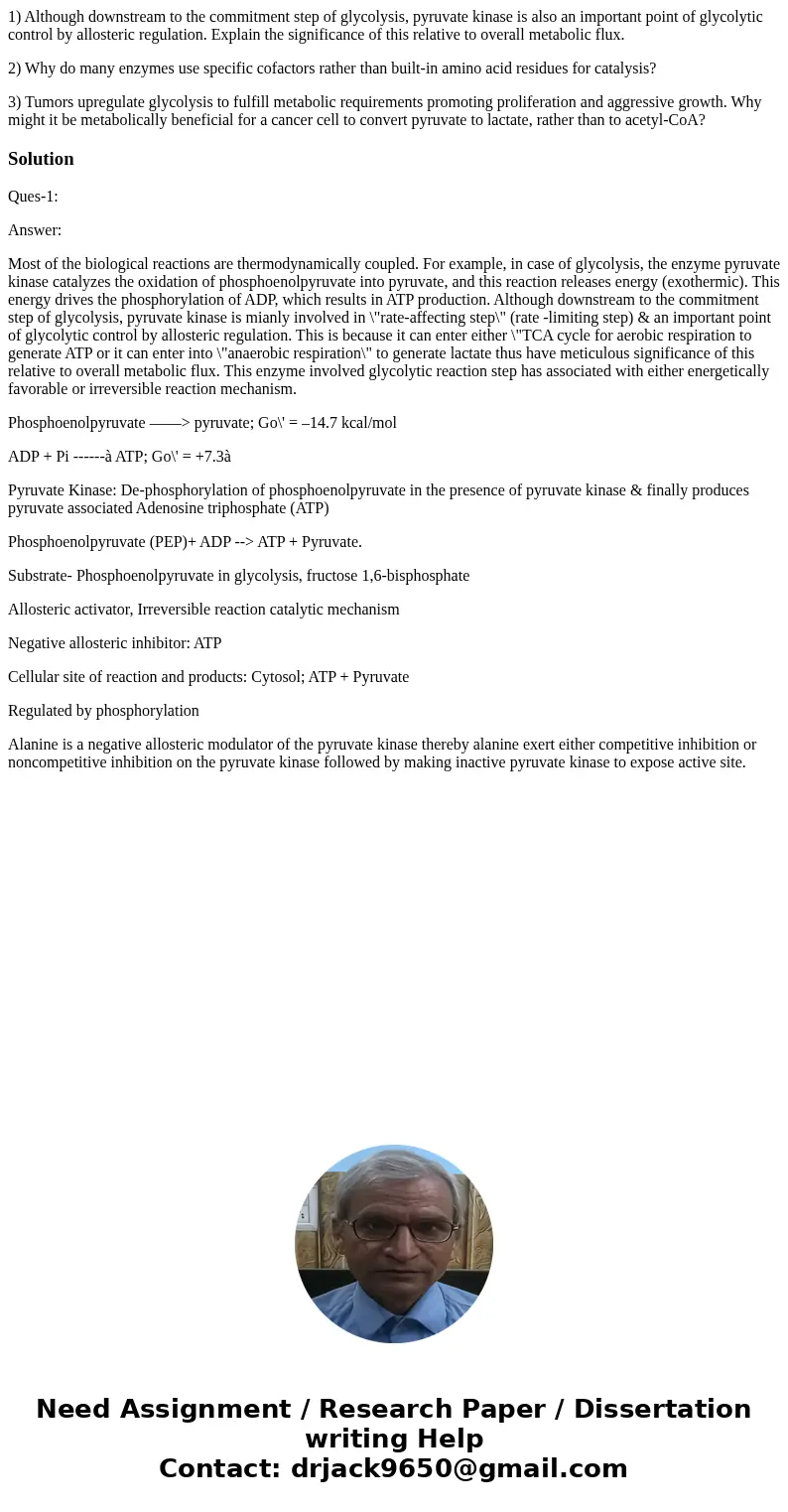1 Although downstream to the commitment step of glycolysis p
1) Although downstream to the commitment step of glycolysis, pyruvate kinase is also an important point of glycolytic control by allosteric regulation. Explain the significance of this relative to overall metabolic flux.
2) Why do many enzymes use specific cofactors rather than built-in amino acid residues for catalysis?
3) Tumors upregulate glycolysis to fulfill metabolic requirements promoting proliferation and aggressive growth. Why might it be metabolically beneficial for a cancer cell to convert pyruvate to lactate, rather than to acetyl-CoA?
Solution
Ques-1:
Answer:
Most of the biological reactions are thermodynamically coupled. For example, in case of glycolysis, the enzyme pyruvate kinase catalyzes the oxidation of phosphoenolpyruvate into pyruvate, and this reaction releases energy (exothermic). This energy drives the phosphorylation of ADP, which results in ATP production. Although downstream to the commitment step of glycolysis, pyruvate kinase is mianly involved in \"rate-affecting step\" (rate -limiting step) & an important point of glycolytic control by allosteric regulation. This is because it can enter either \"TCA cycle for aerobic respiration to generate ATP or it can enter into \"anaerobic respiration\" to generate lactate thus have meticulous significance of this relative to overall metabolic flux. This enzyme involved glycolytic reaction step has associated with either energetically favorable or irreversible reaction mechanism.
Phosphoenolpyruvate ——> pyruvate; Go\' = –14.7 kcal/mol
ADP + Pi ------à ATP; Go\' = +7.3à
Pyruvate Kinase: De-phosphorylation of phosphoenolpyruvate in the presence of pyruvate kinase & finally produces pyruvate associated Adenosine triphosphate (ATP)
Phosphoenolpyruvate (PEP)+ ADP --> ATP + Pyruvate.
Substrate- Phosphoenolpyruvate in glycolysis, fructose 1,6-bisphosphate
Allosteric activator, Irreversible reaction catalytic mechanism
Negative allosteric inhibitor: ATP
Cellular site of reaction and products: Cytosol; ATP + Pyruvate
Regulated by phosphorylation
Alanine is a negative allosteric modulator of the pyruvate kinase thereby alanine exert either competitive inhibition or noncompetitive inhibition on the pyruvate kinase followed by making inactive pyruvate kinase to expose active site.

 Homework Sourse
Homework Sourse